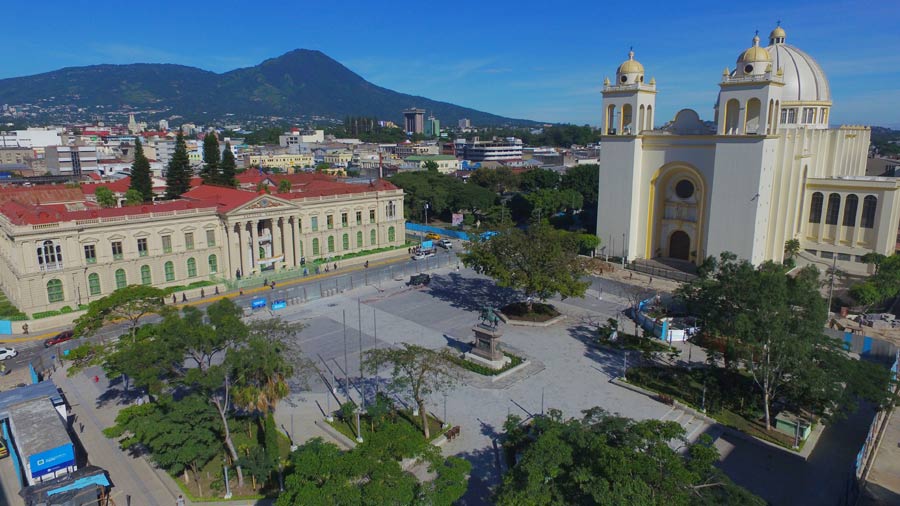Travel advisory is eased to Level 2 from Level 3; move comes after Trump administration reaches asylum deal.
The U.S. State Department eased its travel advisory for El Salvador on Tuesday, days after the U.S. government signed an agreement with the Central American country to send some asylum seekers in the U.S. there.
El Salvador’s travel advisory rating was reduced to Level 2, “Exercise increased caution when traveling to El Salvador due to crime.” The State Department noted that the country has a high murder rate and other violent crime due to widespread gang activity.
It was previously Level 3, the second-highest rating, which recommended Americans reconsider travel there, citing the same conditions. The Level 3 rating put it on par with Honduras. El Salvador, Honduras and Guatemala form the so-called northern triangle, that today accounts for the majority of migrants crossing the U.S.-Mexico border. Guatemala travel advisory rating is Level 2.
The country’s new rating puts it on par with Mexico and European countries including France and Denmark.
El Salvador’s newly elected president, Nayib Bukele, said in an August news conference with acting U.S. Homeland Security Secretary Kevin McAleenan in San Salvador that lowering the travel advisory—which deters tourists from visiting the country—was a priority for his government. On that August trip to El Salvador, Mr. McAleenan visited several potential tourist sites, including a surf academy and hotel.
A State Department spokesman said the travel advisory change wasn’t connected to the recent agreement on asylum.
“Travel advisories are based on a comprehensive and objective review of safety and security conditions that could affect the lives and interests of U.S. citizens abroad,” the spokesman said. “We consider many factors to determine the travel advisory level for each country, including crime. We clearly explain the reason for the travel advisory level and describe the safety and security concerns.”
El Salvador has one of the highest murder rates in the world, with about 50 murders per 100,000 people. But that figure has fallen by more than half since 2015, when violence peaked, sending a cascade of migrants to the U.S. seeking safety.
In the deal El Salvador struck with the U.S. last month, the Central American country appeared not to win any concessions it had sought, most notably continued legal protections known as Temporary Protected Status for 200,000 Salvadoran nationals living in the U.S., which the Trump administration ended.
The text of the new deal will allow the U.S. to send asylum seekers from third countries to El Salvador, though it isn’t clear when the Trump administration will act to implement the accord. Human-rights advocates have criticized the deal, noting that El Salvador isn’t safe for refugees and that the country has a nascent asylum system with just one asylum officer.
Other than the safety level, the text of the travel advisory that the State Department issued Tuesday remains nearly identical.
The administration has used pressure tactics to extract immigration deals with other countries, including Mexico, Guatemala and Honduras, threatening possible tariffs and taxes on remittances flowing to those countries.
A State Department spokesman said all of its travel advisories are based on a comprehensive and objective review of country conditions. “The Department of State has no greater responsibility than the safety and security of U.S. citizens overseas,” the spokesman said.
The agency didn’t answer additional questions about whether other countries that struck deals with the U.S. can expect to see their travel advisories adjusted.
Corrections & Amplifications
El Salvador’s previous travel advisory rating, Level 3, put it on par with Honduras. Guatemala’s travel advisory rating is Level 2. An earlier version of this article incorrectly said El Salvador’s previous Level 3 rating put it on par with both Honduras and Guatemala. (10/02/2019) (https://www.wsj.com/articles/u-s-state-department-reduces-travel-safety-warning-for-el-salvador-11569969926)






































